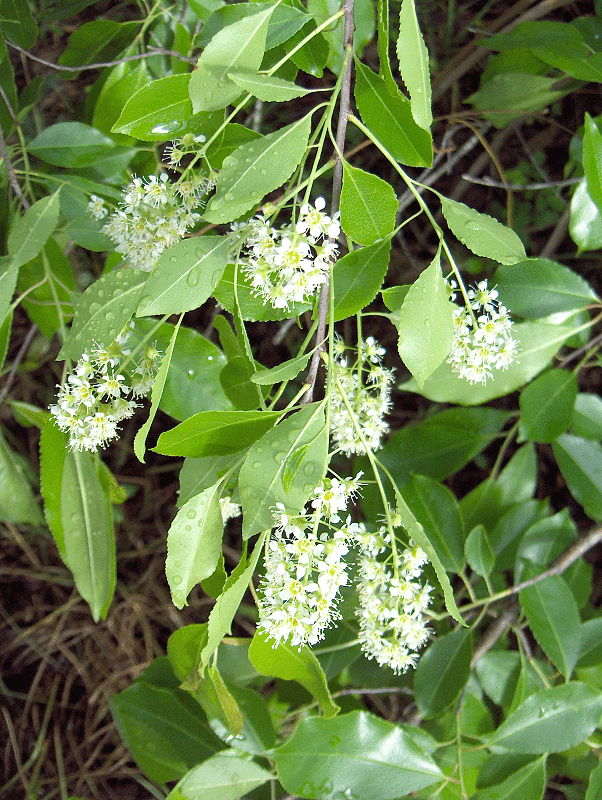Cherry Laurel
No. in Woodland Park: 2
No. in good health: 1
No. in fair health: 1
No. in poor health: 0
Prunus caroliniana, known as the Carolina Cherry Laurel, with syns. Cherry Laurel, Carolina Cherry, Laurelcherry or Wild Mock Orange, is a flowering tree native to the Southeastern United States, from North Carolina south to Florida and westward to eastern Texas. It was once classified as Laurocerasus caroliniana. It is not to be confused with its European relative Prunus laurocerasus, which is also called Cherry Laurel, though mainly known as English Laurel in the U.S.
Prunus caroliniana is a small to medium-sized evergreen tree which grows to about 8–13 m tall, with a spread of about 6–9 m. The leaves are dark green, alternate, glossy, coriaceous, elliptic to oblanceolate, 5–12 cm long, usually with an entire (smooth) margin, but occasionally serrulate (having subtle serrations), and with cuneate bases. The twigs are red to grayish brown, slender, and glabrous. (Reproductively mature trees have entire margins, whereas immature ones often have serrations.)
The white to cream-colored flowers are produced in racemes (stalked bunches) 5–8 cm long in the late winter to early spring. The fruits are tiny black cherries about 1 cm in diameter, which persist through winter and are primarily consumed by birds (February - April).
The leaves and branches contain high amounts of cyanogenic glycosides that break down into hydrogen cyanide when damaged, making it a potential toxic hazard to grazing livestock and children. Due to this, it is considered highly deer-resistant. When crushed, its leaves and green twigs emit a fragrance described as resembling maraschino cherries or almond extract.


